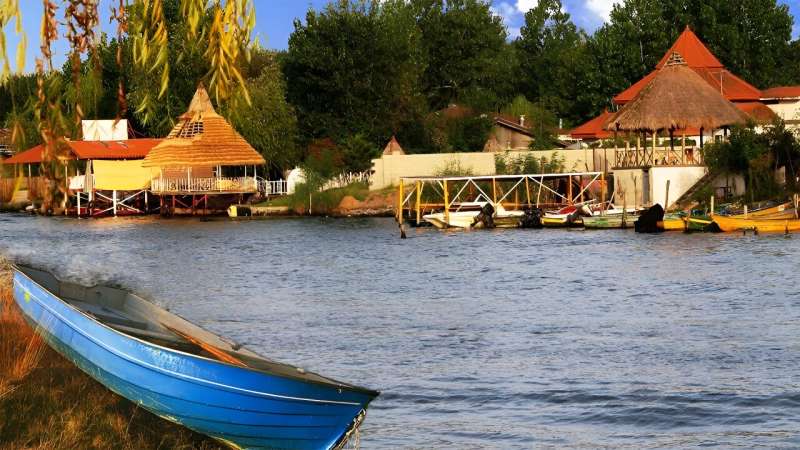This article has been reviewed according to Science X's editorial process and policies. Editors have highlighted the following attributes while ensuring the content's credibility:
fact-checked
peer-reviewed publication
proofread
Anzali wetland, Iran's 'ecological gem,' may dry up by 2060

As climate change progresses, the world's wetlands are disappearing, more quickly in some places than others. Iran has the second-fastest rate of wetland loss (after Greece), having lost 14% of its wetland area between 2010 and 2020.
The Anzali wetland sits in northern Iran, where nine major rivers meet the Caspian Sea. The wetland, one of the world's largest freshwater lagoons, hosts at least 150 species of resident and migrant birds; 49 species of fish; and a multitude of mammals, amphibians, and reptiles. It helps drive the local fishing and agriculture economies and draws more than 180,000 visitors each year.
But because of a warmer and drier climate, lower water levels in the Caspian Sea, higher sediment loads, and increased water demands, the wetland shrank from 258 square kilometers (100 square miles) to just 52 square kilometers (20 square miles) between 1930 and 1989, losing about 80% of its water surface area in the process. Degradation continued after that point, and today, scientists are concerned the wetland could disappear altogether.
M. Mahdian and colleagues modeled the wetland's potential futures with different climatic, hydrologic, and anthropogenic trajectories for the rest of the century. Over that period, the Caspian Sea is projected to drop 4 to 10 meters (14 to 33 feet). The work is published in the Journal of Geophysical Research: Atmospheres.
The modeling found that even in the most conservative scenarios, the Anzali wetland will at least become only a seasonal water body by the end of the century, which would still negatively affect the region's ecology and economy. In more extreme scenarios, the wetland could entirely dry up by about 2060.
The consequences of desiccation are dire, ranging from a decimated economy due to declines in fishing to complete ecological collapse and, eventually, the death of the wetland. To avoid that fate, watershed management and agriculture must draw less water, contribute less sediment, and add fewer pollutants than they have been in recent decades, the authors wrote.
More information: M. Mahdian et al, Anzali Wetland Crisis: Unraveling the Decline of Iran's Ecological Gem, Journal of Geophysical Research: Atmospheres (2024). DOI: 10.1029/2023JD039538
Journal information: Journal of Geophysical Research - Atmospheres
Provided by Eos
This story is republished courtesy of Eos, hosted by the American Geophysical Union. Read the original story here.





















